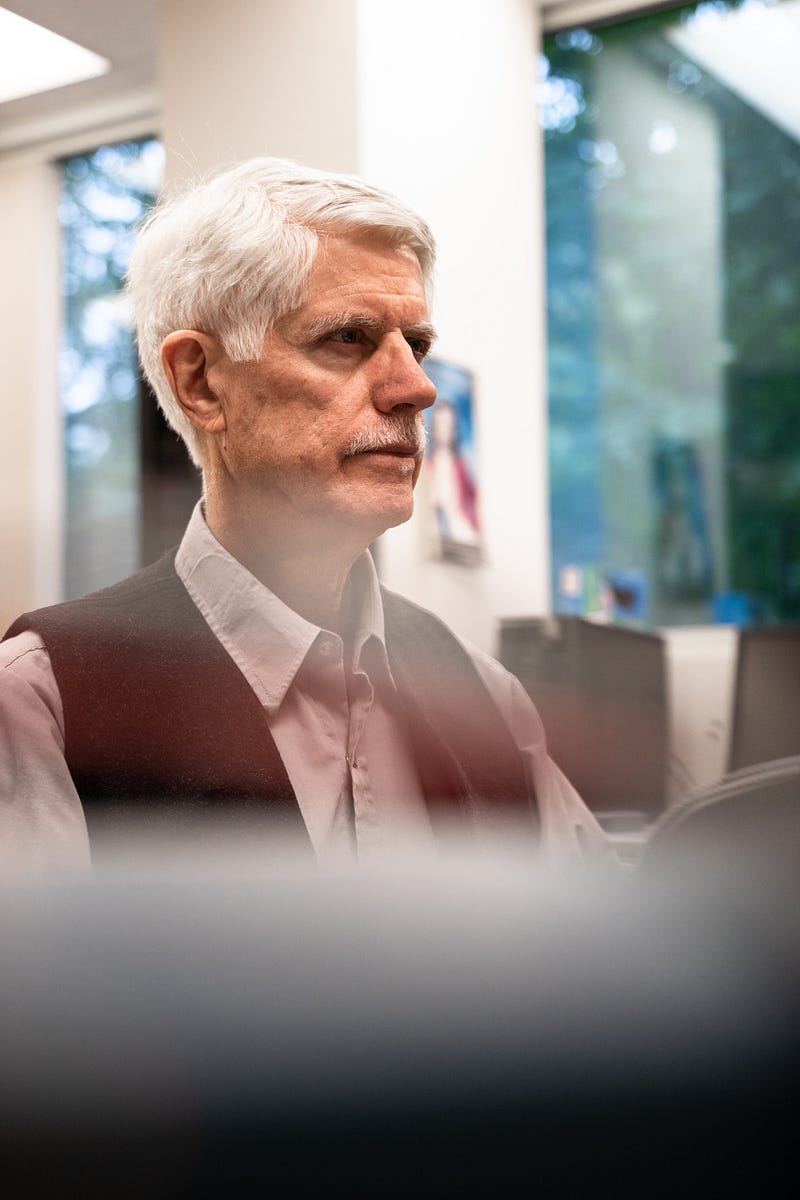The future of magnetic materials: A conversation with Dr. Don Heiman
By Dattu Kalluri, Biochemistry, 2022

The Nanomagnetism Lab here at Northeastern University looks like a filming location for a new sci-fi film — at the entrance, emblazoned are the bright red words “CAUTION: HIGH MAGNETIC FIELD.” As you walk in, you see a long metal rod with a tangle of thin wires around it hanging from the door leading to Dr. Don Heiman’s office. “This is a cooling unit for a quantum computer,’’ he explained, seemingly delighted to share his research. As an experimental physicist, Heiman specializes in spintronic materials.
“Of course, spintronics is about a lot more than just computing,” he continued, gesturing to the many contraptions strewn across the lab. Spintronics at its core is about taking electricity a step further. Instead of just using electricity to power devices, the properties of the individual electrons themselves are used to transmit data.
“Electrons have a property called intrinsic angular momentum — quantum spin,” explained Heiman. This momentum can be either of two opposite values. By polarizing the electrons so that only the ones with specific spin make it through a filter, the electrons can be used to store data or make special materials.
Instead of just using electricity to power devices, the properties of the individual electrons themselves are used to transmit data.
The applications for computing are myriad: storing large amounts of data more efficiently, computing faster, and creating a fail-safe for quantum computers. One of the biggest problems with quantum computers is their propensity for errors in computing. By creating a spintronic device called a topological insulator, which behaves as a conductor on the surface but an insulator in the interior, errors can be reduced.
Though Professor Heiman has an even more pragmatic use: “Polarized currents dissipate less energy.” Understanding how to effectively create polarized currents can lead to more efficient devices, leading to lower energy consumption.
Doing this, however, has proven tricky. This is why his lab, in conjunction with labs at Massachusetts Institute of Technology, The University of Notre Dame, and the National Security Administration, was recently awarded a $90,000 grant from the National Science Foundation Division of Materials Science.
His lab is specifically focused on developing methods to create these special currents at room temperature. To do this, he is using spin gapless semiconductors and spin filters, which channel electrons into different currents based on their spin. He is also working with other labs to create metals called Heusler compounds, which combine these two properties with magnetism to be applied to quantum information processing.
“Quantum computing is the future,’’ Heiman explained. “If we get this to work, our computers can do calculations a lot faster than the ones we have today.”
